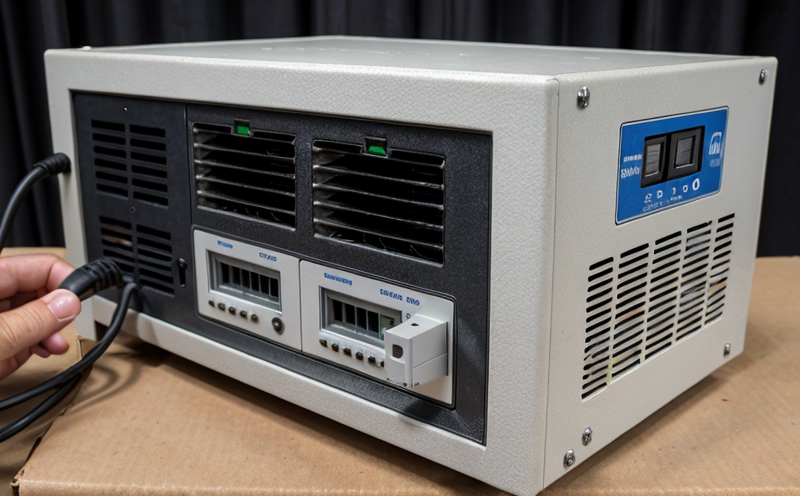Uninterruptible power supply inspection
The Uninterruptible Power Supply (UPS) is a critical component in many industrial and commercial settings where continuous electrical power is essential. UPS systems are designed to provide backup power during brief periods when the primary electrical source fails or fluctuates, ensuring minimal disruption to operations. Proper UPS inspection involves thorough testing of both the hardware components and software control systems to ensure reliable performance under all expected conditions.
Quality managers and compliance officers must be aware that even slight failures in a UPS system can lead to significant operational downtime, which could result in financial losses or safety risks. Therefore, regular inspections are crucial for maintaining the integrity of these systems. R&D engineers play an integral role in understanding the latest technologies and standards related to UPS design and operation, while procurement teams focus on selecting reliable suppliers who adhere to stringent quality control measures.
UPS inspection typically includes a range of tests aimed at evaluating various aspects such as battery health, output voltage stability, overload capacity, runtime duration, efficiency levels, and response time during power failures. Compliance officers need to ensure that all inspections comply with relevant international standards like IEC 62087 for UPS performance evaluation.
The inspection process also considers environmental factors such as temperature changes and humidity levels which can affect the lifespan of a UPS system. By conducting periodic checks, stakeholders can identify potential issues early on before they escalate into more serious problems that might compromise overall reliability.
For quality managers overseeing multiple facilities, it is important to establish standard operating procedures (SOPs) for UPS inspections based on best practices outlined by industry experts and regulatory bodies. These SOPs should cover everything from planning the inspection schedule to documenting results accurately. In doing so, they help maintain consistent standards across all locations.
In summary, UPS inspection plays a vital role in safeguarding critical infrastructure against unexpected power interruptions. Through rigorous testing protocols aligned with established guidelines, organizations can enhance their resilience and protect valuable assets from potential disruptions caused by electrical failures.
Applied Standards
| Standard | Description |
|---|---|
| IEC 62087-1 | Performance Evaluation of Standby Power Supplies (UPS) |
| EN 50194 | Technical Characteristics for UPS Systems in Telecommunications and IT Applications |
| ASTM F2863 | Standard Practice for Testing Uninterruptible Power Supply (UPS) Performance and Reliability |
| Standard | Description |
|---|---|
| UL 1946 | Performance, Safety, and Environmental Requirements for Uninterruptible Power Supplies (UPS) |
| IETF RFC 2783 | Definition of a Standard Action for UPS Monitoring Protocols |
International Acceptance and Recognition
The IEC (International Electrotechnical Commission) and other global standards bodies like ANSI/IEEE, ASME, and CENELEC have established comprehensive guidelines for UPS testing and certification. These organizations work together to ensure consistency in the quality of UPS products across different regions.
UPS inspections conducted according to these international standards are widely accepted by governments, industries, and regulatory authorities worldwide. Compliance with these specifications guarantees that the inspected systems meet stringent safety and performance criteria, thereby enhancing trust among end users.
Many large corporations have implemented policies requiring third-party laboratories accredited in accordance with ISO/IEC 17025 to perform UPS inspections. This ensures impartiality and accuracy in the assessment process, providing assurance for all stakeholders involved.
Environmental and Sustainability Contributions
- Reduces energy consumption during power outages by minimizing idle standby losses
- Prolongs battery life through efficient management of charging cycles
- Maintains continuous operation in environmentally sensitive areas where downtime is not an option
- Supports green initiatives by contributing to reduced carbon emissions from data centers and other critical facilities





